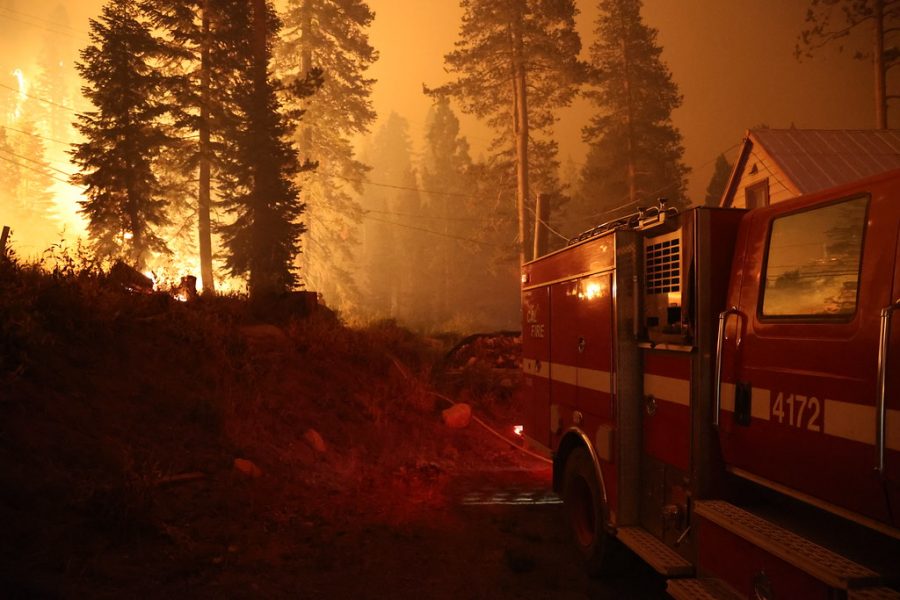Foil Wrapped Fire Prevention
Wildfires have long been sources of damage to the west, and the Caldor Fire was no exception. It threatened South Lake Tahoe and destroyed millions of acres of property, therefore uprooting many lives. However, amidst the chaos, a peculiar looking solution to these types of fires was rediscovered.
Although it gives the cabin the appearance of a house disguised as a baked potato, covering the structure in an aluminum blanket is a concept that has proven to be effective in aiding homeowners in saving their residences from fire’s destructive path.
Fire wrapping houses has been a practice used by firefighters since 1988. When a fire broke out in Yellowstone National Park, firefighters used blankets to protect a building of historical value, and it was relatively undamaged by the fire. From then on, fire wrapping became a practice that was rarely used but was highly effective. Rarely used because of the expense (Firezat sells 5 feet of wrap for $687) and the amount of work it takes to cover the house, it isn’t necessarily a practical solution, reports the San Francisco Chronicle. Because residents would have to have a team of about five people, hundreds of thousands of staples to fasten the blanket, and around seven hours of preparation time before the fire arrived, it is a relatively unknown method in fire protection.
The three most appealing results of these big fire blankets, the San Francisco Chronicle lists, are “preventing firebrands, or large burning embers, from entering buildings through gutters, eaves, vents, broken windows and roofs, or lodging in corners or other angular spots,” “keeping homes from making direct contact with flames,” and “reflecting thermal radiation from a large fire burning nearby over a sustained period, possibly protecting the house from bursting into flames in the intense heat.”
Although it looks like it, this fire proof blanket is not actually aluminum foil. Instead, it is a blanket containing a layering of aluminum on the outside and a polyester and fiberglass combination inside all “laminated with a high-temperature adhesive” Dan Hiring ,founder of Firezat, disclosed to the San Francisco Chronicle.
However, in one special case, Eric Raymond wrapped his cabin in thick aluminum foil. When he heard the Caldor Fire was headed his way, he told the San Francisco Chronicle, he was looking to purchase the fiberglass version from Firezat but was not guaranteed to arrive in time. So, as an engineering manager at a vacuum factory, he asked to utilize unused rolls of thick aluminum foil. “Working by himself, it took about seven hours and 1,250 staples to cover three sides of his mountain cabin, minus a huge array of windows and a side of the home next to a concrete cabin”, San Francisco Chronicle said.
While the danger of wildfires continues to increase, it is comforting to know there are some creative and innovative solutions to possibly counteract the dangerous effects of fires. Even though it is difficult to widely institute the use of these fire blankets, it is intriguing to learn about how they can be helpful and prevent homeowner’s properties from feeling the heat.

















